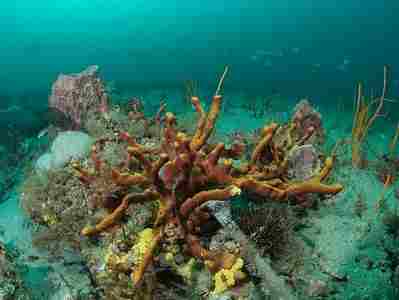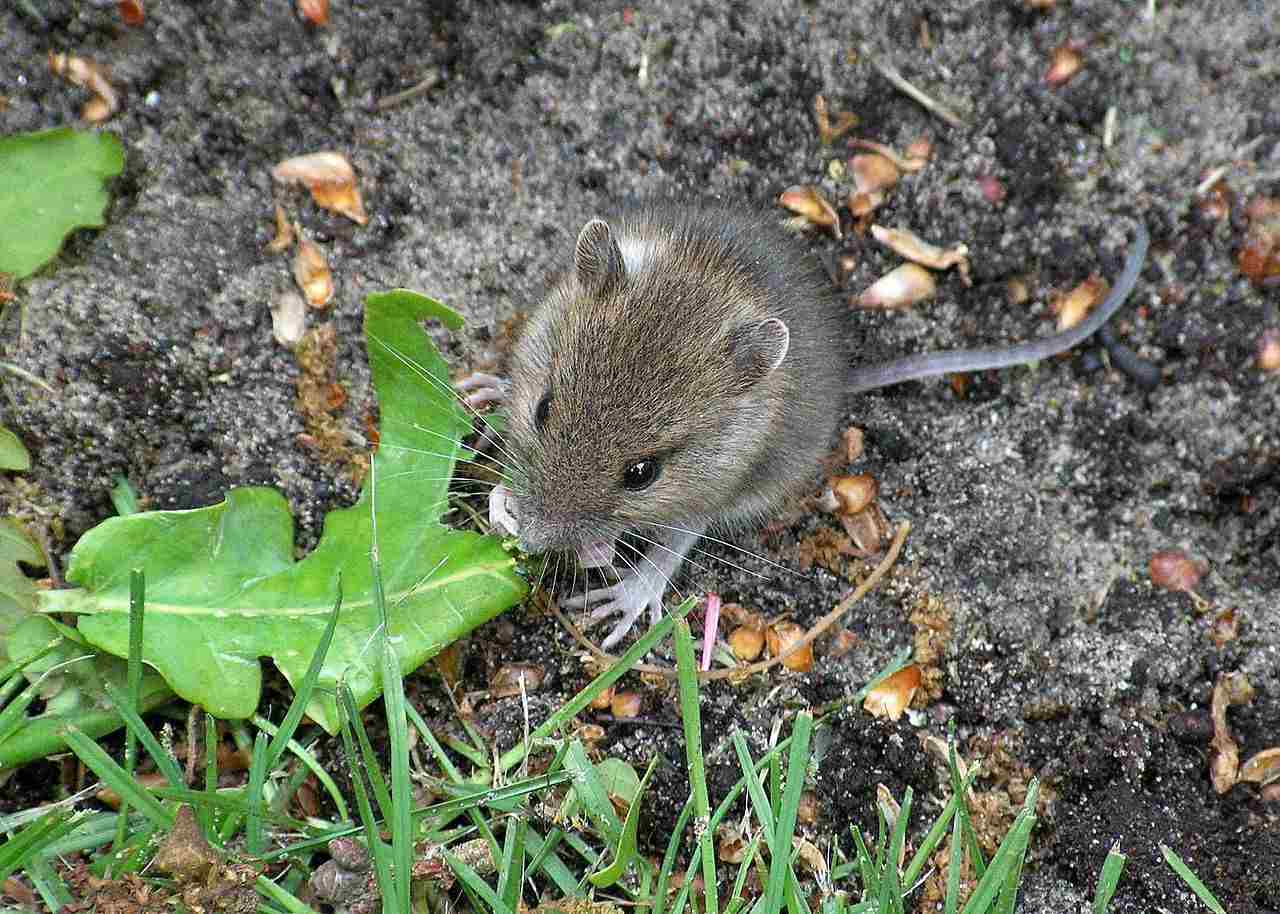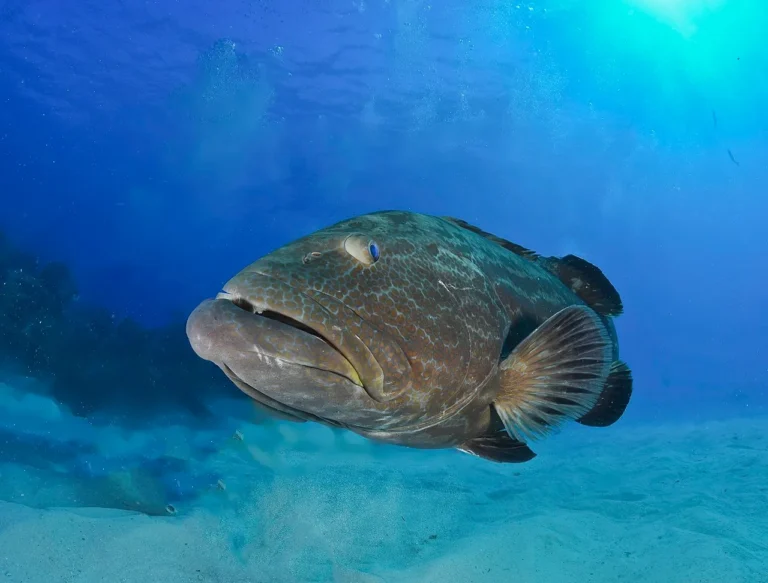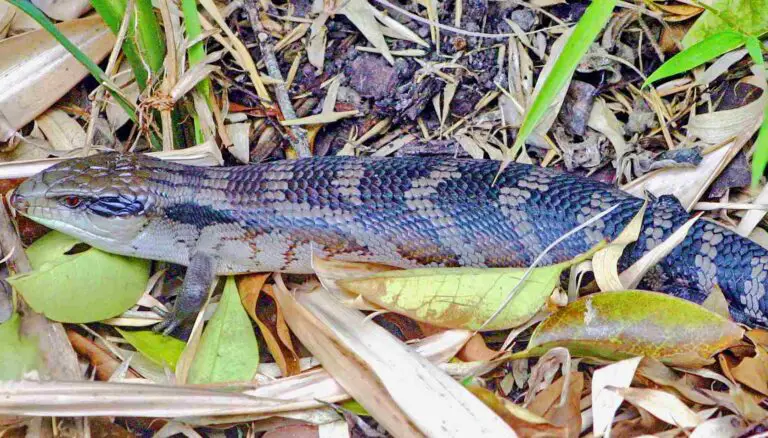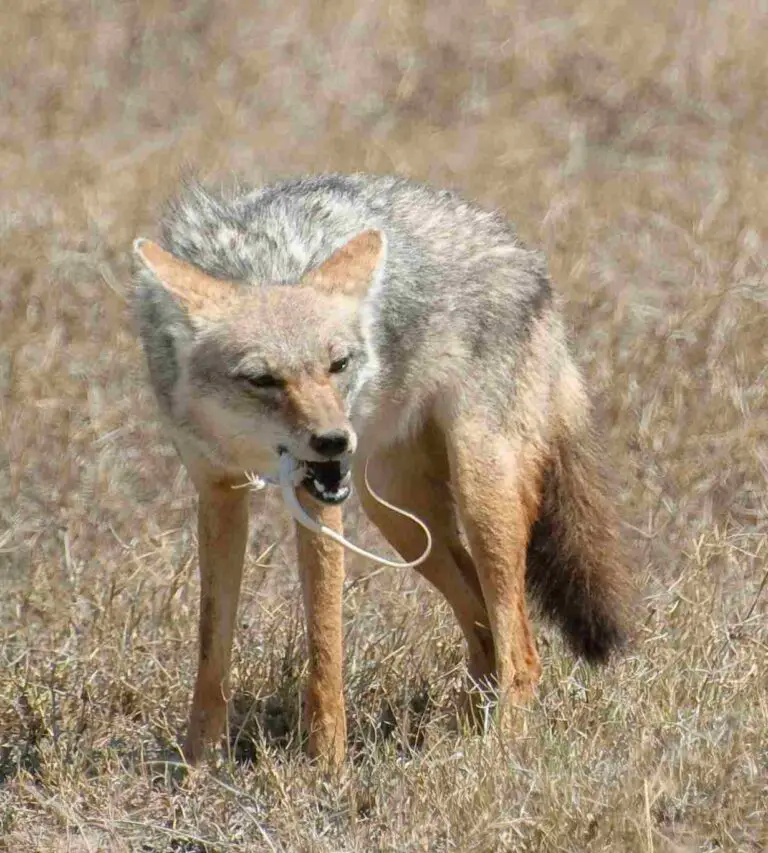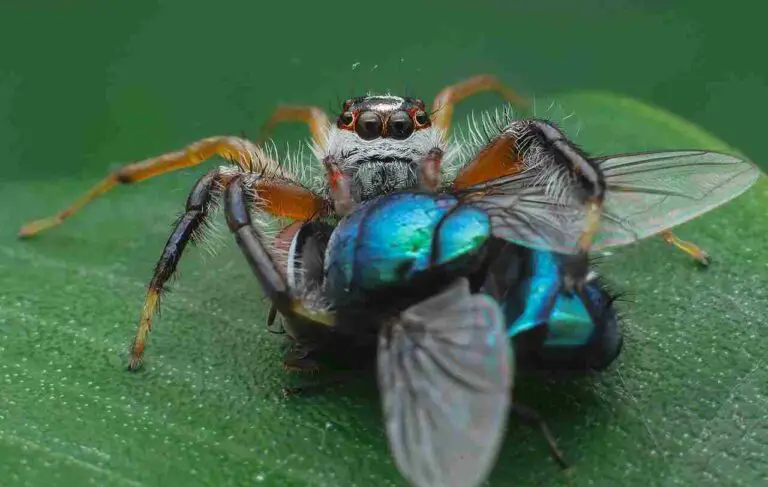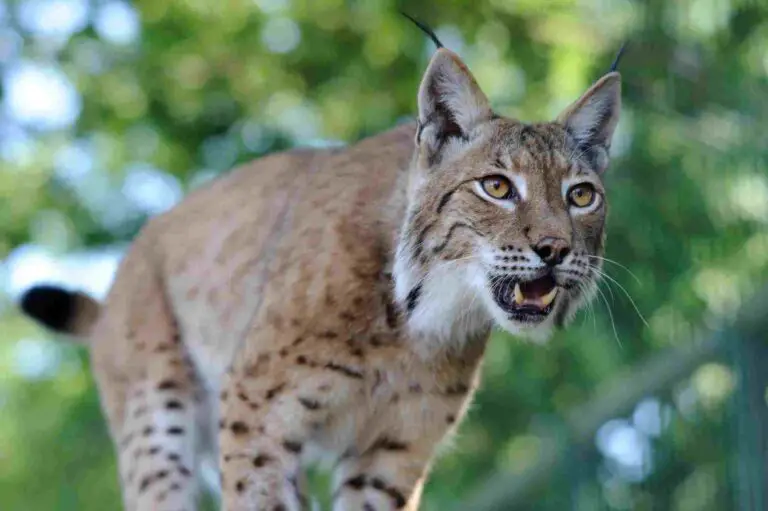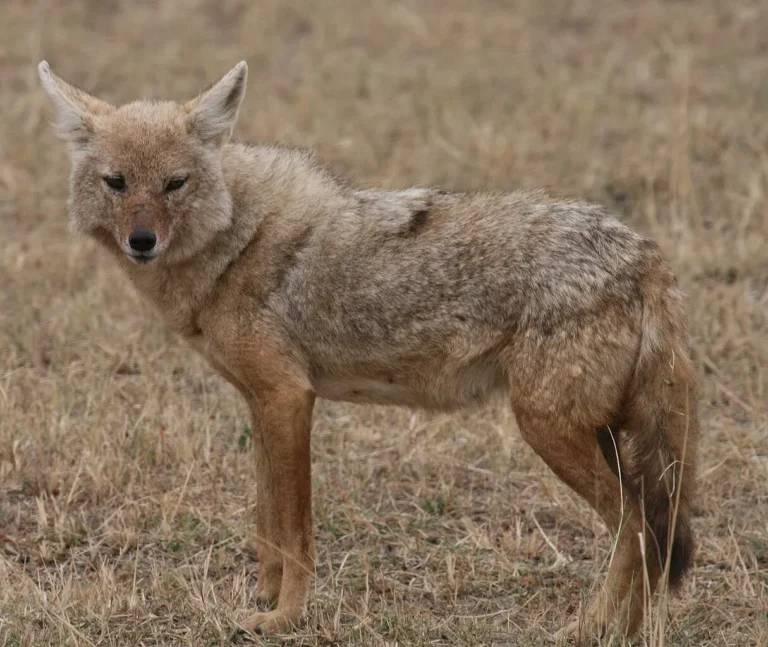Are Crabs Consumers? Trophic Role and Position of Crab in Ecosystems
Crabs are consumers because they are not able to synthesize organic compounds from inorganic resources like consumers, but rather derive energy and nutrients by feeding on organic matter from external sources.
This article discusses the consumer role of crabs and their importance in ecosystems.
Is a Crab a Producer?
No, a crab is not a producer because it lacks autotrophic characteristics such as the ability to manufacture food or biomass from solar energy and chemical compounds. Producers are organisms like algae, chemosynthetic bacteria, vascular and non-vascular plants that do not need to feed on other organisms.
Crabs, on the other hand, are consumers. They belong to the group of organisms known as heterotrophs, which rely on other organisms to gain nutrients and bioenergy. Unlike producers, crabs cannot synthesize organic compounds from inorganic resources. Instead, they derive their energy and nutrients by feeding on organic matter from external sources.
There are several reasons why crabs are not classified as producers. Firstly, they lack the ability to perform photosynthesis, which is a key characteristic of autotrophs. Photosynthesis is the process by which producers convert solar energy into chemical energy, which is then used to synthesize organic compounds. Crabs do not possess the necessary pigments and chloroplasts required for photosynthesis.
Secondly, crabs do not have the specialized structures and adaptations that are typical of producers. Producers often have leaves, stems, and roots that enable them to capture sunlight, absorb nutrients from the soil, and carry out photosynthesis. Crabs, on the other hand, have a hard exoskeleton, jointed limbs, and specialized appendages for feeding and locomotion.
Lastly, crabs rely on other organisms for their source of food. They are primarily scavengers and predators, feeding on a variety of organic matter such as dead animals, plants, and detritus. This dependence on external food sources further distinguishes them from producers, who are self-sufficient in terms of their nutritional needs.
Reasons Why a Crab is Not a Producer
1. Inability to Synthesize Organic Compounds
One of the reasons why crabs are not considered producers in ecosystems is their inability to synthesize organic compounds. Unlike plants and some bacteria, crabs lack the necessary cellular machinery to carry out photosynthesis or chemosynthesis. These processes are essential for converting inorganic substances into organic compounds, such as sugars and carbohydrates, which serve as the building blocks of life.
Without the ability to produce their own food, crabs must rely on other organisms to obtain the nutrients and energy they need to survive. They are classified as heterotrophs, which means they obtain their food by consuming other organisms. This places them in the consumer category rather than the producer category in the trophic hierarchy.
Crabs have a diverse diet, feeding on a variety of organisms including algae, mollusks, small fish, and even detritus. They are opportunistic feeders, scavenging for food in their surrounding environment. By consuming other organisms, crabs obtain the organic compounds necessary for their growth, reproduction, and overall survival.
In addition to their inability to synthesize organic compounds, crabs also lack the typical features of producers. Unlike plants, they do not possess chloroplasts or any specialized structures for photosynthesis. Instead, their bodies are adapted for a predatory lifestyle, with sharp claws and strong appendages for capturing and manipulating their prey.
Furthermore, crabs do not contribute to the production of oxygen through photosynthesis, which is a key characteristic of producers. Instead, they consume oxygen and release carbon dioxide, similar to other animals. This further supports their classification as consumers rather than producers in the ecosystem.
2. Reliance on Other Organisms to Gain Nutrients and Bioenergy
Crabs are not considered producers in ecosystems due to their reliance on other organisms to obtain nutrients and bioenergy. They are unable to synthesize organic compounds like plants and some bacteria, which limits their ability to produce their own food. Instead, crabs are classified as heterotrophs, meaning they obtain their food by consuming other organisms.
One of the main sources of nutrients and bioenergy for crabs is zooplankton. These tiny organisms, including fellow crustaceans, serve as a vital food source for crabs. By feeding on zooplankton, crabs are able to obtain the necessary nutrients and energy they need to survive and thrive in their environment.
In addition to zooplankton, crabs also consume other organisms such as fish. They are opportunistic feeders, taking advantage of any available food sources in their surroundings. This reliance on other organisms for sustenance further reinforces their classification as consumers rather than producers in the trophic hierarchy.
Crabs play an important role in the food web by regulating the populations of their prey species. By consuming other organisms, they help to control the abundance of certain species, preventing overpopulation and maintaining a balanced ecosystem. This predation pressure exerted by crabs contributes to the overall stability and health of the ecosystem.
Furthermore, crabs contribute to nutrient cycling in ecosystems. As they consume other organisms, they break down organic matter and release nutrients back into the environment through their waste products. This process helps to recycle essential nutrients, ensuring their availability for other organisms in the ecosystem.
However, it is important to note that while crabs rely on other organisms for nutrients and bioenergy, they do not possess the typical features of producers. They lack structures like leaves, roots, chlorophyll, and flagella, which are essential for photosynthesis. Instead, their bodies are adapted for a predatory lifestyle, with specialized appendages for capturing and manipulating their prey.
3. Lack of Typical Producer Features
Crabs lack typical producer features such as leaves, roots, chlorophyll, and flagella, which is one of the reasons why they are not considered producers in ecosystems. These structures are essential for photosynthesis, the process by which plants and some bacteria synthesize organic compounds using sunlight as an energy source. Without these features, crabs are unable to produce their own food through photosynthesis.
Instead, crabs rely on other organisms for their source of nutrients and bioenergy. They are classified as heterotrophs, meaning they obtain their food by consuming other organisms. Crabs are opportunistic feeders, taking advantage of any available food sources in their surroundings. They consume a variety of organisms, including zooplankton and fish, to meet their nutritional needs.
The absence of typical producer features in crabs is a result of their adaptation to a predatory lifestyle. Their bodies are specialized for capturing and manipulating prey, with specialized appendages such as claws and mouthparts. These adaptations allow them to efficiently catch and consume other organisms, but they do not possess the structures necessary for photosynthesis.
Crabs play an important role in the food web as consumers. By regulating the populations of their prey species, they help to maintain a balanced ecosystem. Their predation pressure prevents overpopulation and ensures the survival of other species in the ecosystem. Additionally, crabs contribute to nutrient cycling by breaking down organic matter and releasing nutrients back into the environment through their waste products. This process helps to recycle essential nutrients and maintain the overall health of the ecosystem.
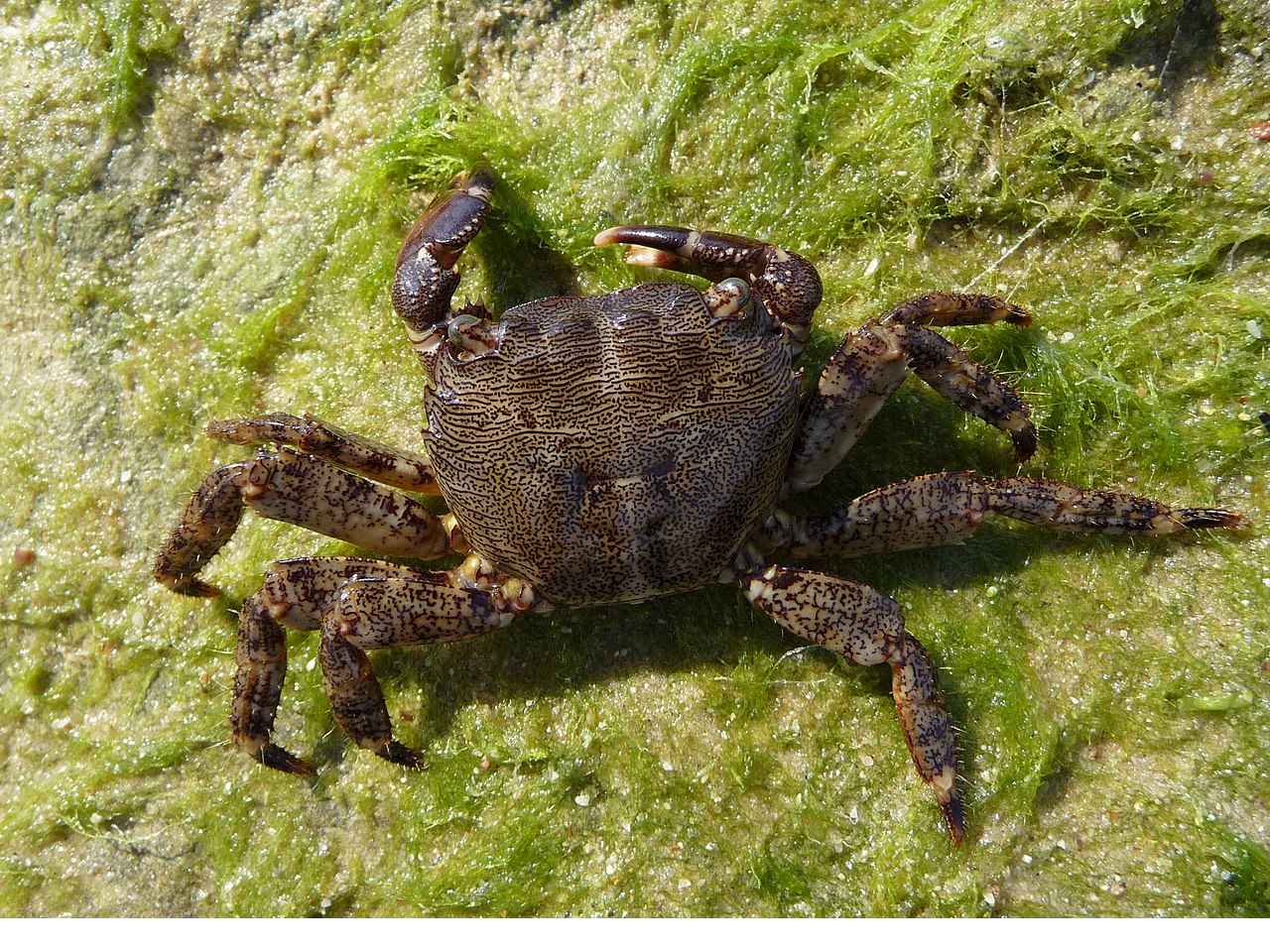
What Type of Consumer is a Crab?
Crabs are a highly versatile and opportunistic, omnivorous consumer in ecosystems. While they are often classified as secondary consumers, there are several reasons why they may not fit the typical definition of a primary consumer.
One reason is their small size and the range of food sources they consume. Crabs have a diverse diet and are known to feed on a variety of organisms, including both plant and animal matter. This makes them more adaptable and flexible in their feeding habits compared to strict herbivorous primary consumers.
Another factor that distinguishes crabs from primary consumers is their trophic impact on the ecosystem. Primary consumers typically have a significant influence on the energy flow and nutrient cycling within an ecosystem. However, crabs, although important in their own right, may not have the same level of impact as primary consumers.
In some cases, crabs may function as tertiary consumers in small, highly localized, or microscopic food chains. This is particularly true for certain species, such as the blue crab. In these situations, the lower trophic levels may be occupied by smaller and simpler organisms like krill, mussels, limpets, some insect larvae, and shrimp. As a result, crabs at the top of the food chain may be considered tertiary consumers due to their position and the complexity of the organisms they consume.
It is important to note that the classification of crabs as consumers is not always straightforward. Their trophic role can vary depending on the specific ecosystem and the availability of food sources. Additionally, the classification of consumers is not always rigid, and there can be overlap between different trophic levels.
Are Crabs Primary Consumers?
Generally, crabs are not considered primary consumers in ecosystems. This is due to several reasons that distinguish them from typical primary consumers.
One key factor is their opportunistic feeding behavior. Unlike primary consumers that exclusively feed on producers, such as plants or algae, crabs have a more diverse diet. They are known to consume a wide range of organisms, including both plant and animal matter. This adaptability and flexibility in their feeding habits make them more suited to be classified as secondary consumers rather than primary consumers.
Another reason why crabs are not typically classified as primary consumers is their biological complexity and advancement. In coastal or aquatic ecosystems, primary consumers are often represented by simpler organisms like krill and copepods. Crabs, on the other hand, possess more complex anatomical structures and physiological adaptations. Their advanced characteristics, such as their specialized appendages and sensory organs, enable them to actively hunt and capture prey, which is not typical behavior for primary consumers.
Considering these factors, it is more accurate to classify crabs as secondary consumers. As secondary consumers, they occupy a higher trophic level in the food chain and play a crucial role in regulating the population of their prey species. By consuming a variety of organisms, including primary consumers, crabs help to control the abundance and distribution of lower trophic levels, contributing to the overall stability and balance of the ecosystem.
It is important to note that the classification of crabs as consumers is not always black and white. In some cases, crabs may function as tertiary consumers in specific food chains where they occupy the top trophic level.
This is particularly true for certain species, such as the blue crab, in localized or specialized ecosystems. In these situations, the lower trophic levels may be occupied by smaller and simpler organisms, and crabs at the top of the food chain may be considered tertiary consumers due to their position and the complexity of the organisms they consume.
Are Crabs Decomposers?
While crabs may contribute immensely to the local biodegradation process, they are not generally suitable to be classified as typical decomposers. Although they are detritivores, meaning they feed on dead organic matter, crabs do not function exclusively as detritivores. Additionally, they do not facilitate the external biochemical breakdown of organic substrate, aside from the digestion and assimilation of nutrients.
Crabs play a crucial role in the decomposition of organic matter in coastal and aquatic ecosystems. As detritivores, they scavenge on dead plants, animals, and other organic material, helping to break them down into smaller particles. This process aids in the release of nutrients back into the ecosystem, contributing to nutrient cycling. However, it is important to note that crabs are not the primary drivers of decomposition in these ecosystems.
One reason why crabs are not considered typical decomposers is that their feeding behavior extends beyond detritivory. While they do consume dead organic matter, they are also opportunistic feeders, consuming a wide range of organisms, including live prey. This versatility in their diet makes them more accurately classified as omnivores or secondary consumers rather than decomposers.
Furthermore, crabs do not actively facilitate the external biochemical breakdown of organic substrate. Unlike true decomposers, such as bacteria and fungi, crabs do not possess the necessary enzymes or mechanisms to break down complex organic compounds. Instead, they rely on their digestive system to break down the ingested organic matter into simpler forms that can be assimilated for energy and nutrients.
Another factor that disqualifies crabs from being typical decomposers is their macroscopic dimensions. Decomposers are often microscopic organisms, such as bacteria and fungi, that can penetrate and break down organic matter at a cellular level. Crabs, on the other hand, have a larger size and lack the microscopic structures required for efficient decomposition. While they may contribute to the physical breakdown of organic material through their feeding and movement, their impact on the biochemical breakdown is limited.
Despite not being classified as typical decomposers, crabs still play an important role in the overall decomposition process. By consuming dead organic matter, they help to fragment and disperse the material, increasing the surface area available for microbial decomposition. Additionally, their feeding activities contribute to the physical breakdown of organic material, aiding in the overall decomposition process.
Reasons Why Crabs May be Classified as Decomposers
1. Detritivorous Feeding
One reason why crabs may be classified as decomposers is their detritivorous feeding behavior. Detritivores are organisms that consume dead organic matter, such as decaying plants and animals. Crabs, particularly those that inhabit coastal ecosystems, play a crucial role in the decomposition process by feeding on detritus.
Crabs have specialized mouthparts and digestive systems that allow them to break down and consume decaying organic material. They use their strong claws to scavenge for detritus on the ocean floor or in intertidal zones. As they feed on dead plants and animals, they help to break down the organic matter into smaller particles, facilitating the decomposition process.
By consuming detritus, crabs contribute to the nutrient cycling within ecosystems. As they break down organic matter, they release nutrients back into the environment, making them available for other organisms to utilize. This recycling of nutrients is essential for the overall health and functioning of the ecosystem.
Furthermore, the detritivorous feeding behavior of crabs also helps to prevent the accumulation of organic waste. Dead plants and animals can accumulate in coastal areas, leading to the buildup of organic waste. Crabs play a vital role in removing this waste by consuming and breaking it down. This not only helps to maintain the cleanliness of the ecosystem but also prevents the release of harmful substances that can negatively impact other organisms.
In addition to their role in nutrient cycling and waste removal, crabs also contribute to the overall biodiversity of ecosystems. Their detritivorous feeding behavior provides a food source for other organisms, such as fish and birds, which rely on dead organic matter as part of their diet. By consuming detritus, crabs support the food web and provide energy for higher trophic levels.
2. Role in Removal of Organic Waste
Crabs play a significant role in the removal of organic waste, which is another reason why they may be classified as decomposers. Their detritivorous feeding behavior allows them to consume dead plants and animals, effectively reducing the accumulation of organic waste in ecosystems.
By feeding on decaying organic matter, crabs help to break it down into smaller particles. This process aids in the decomposition of organic waste, making it easier for other decomposers, such as bacteria and fungi, to further break down the material. The actions of crabs contribute to the overall efficiency of the decomposition process, ensuring that organic waste is effectively recycled within the ecosystem.
In coastal areas, where crabs are commonly found, the accumulation of organic waste can be particularly problematic. Dead plants and animals can wash up on shorelines, leading to the buildup of organic debris. Crabs play a crucial role in removing this waste by consuming and breaking it down. Their scavenging behavior helps to keep coastal areas clean and prevents the release of harmful substances that can negatively impact other organisms.
Furthermore, the removal of organic waste by crabs has broader ecological implications. By reducing the amount of organic debris in the environment, crabs create a healthier habitat for other organisms. Excessive accumulation of organic waste can lead to oxygen depletion and the release of toxic substances, which can harm marine life. Crabs help to mitigate these issues by actively removing organic waste and promoting a cleaner and more sustainable ecosystem.
The role of crabs in the removal of organic waste also highlights their importance in maintaining the balance of coastal ecosystems. By consuming dead plants and animals, crabs prevent the buildup of organic waste that could disrupt the natural functioning of the ecosystem. This, in turn, supports the overall biodiversity of the area, as other organisms rely on a clean and healthy environment for their survival.
3. Contribution to Nutrient Cycling
Another reason why crabs may be classified as decomposers is their significant contribution to nutrient cycling within ecosystems.
Crabs play a crucial role in the breakdown and recycling of organic matter, which helps to release essential nutrients back into the environment. Through their detritivorous feeding behavior, crabs consume decaying plants and animals, breaking them down into smaller particles. This process not only aids in the decomposition of organic waste but also releases valuable nutrients that can be utilized by other organisms.
By consuming and breaking down organic matter, crabs help to release nutrients such as nitrogen, phosphorus, and carbon back into the ecosystem. These nutrients are essential for the growth and survival of various organisms, including plants and phytoplankton. As crabs feed on decaying material, they release these nutrients through their excretion and waste, making them available for uptake by other organisms.
The recycling of nutrients by crabs is particularly important in coastal ecosystems, where nutrient availability can be limited. By actively participating in nutrient cycling, crabs contribute to the overall productivity and health of these ecosystems. They help to maintain a balance between nutrient inputs and outputs, ensuring that essential elements are continuously available for the growth and development of marine life.
Factors that May Disqualify Crabs from being Typical Decomposers
1. Lack of Saprophytic Characteristics
One factor that may disqualify crabs from being classified as typical decomposers is their lack of saprophytic characteristics. Saprophytic organisms play a crucial role in the decomposition process by breaking down dead organic matter and recycling nutrients back into the ecosystem. However, crabs do not possess the necessary traits to fulfill this role effectively.
Saprophytic organisms, such as fungi and bacteria, have the ability to secrete enzymes that break down complex organic compounds into simpler forms. These enzymes allow them to extract nutrients from decaying matter and utilize them for their own growth and energy needs. In contrast, crabs lack the enzymatic machinery required for the efficient breakdown of organic matter.
While crabs may contribute to the decomposition process indirectly by physically fragmenting organic remains, they do not possess the ability to initiate the biochemical breakdown themselves. This limitation sets them apart from true saprophytes, which actively participate in the breakdown of organic matter through enzymatic activity.
Another characteristic of saprophytic organisms is their ability to absorb nutrients directly from the decomposing material. Fungi, for example, have specialized structures called hyphae that penetrate the organic matter, allowing them to absorb nutrients directly. In contrast, crabs rely on external digestion, where they consume partially decomposed organic matter and extract nutrients through their digestive system.
Furthermore, crabs are macroscopic organisms, meaning they are relatively large in size compared to microorganisms like bacteria and fungi. This size difference limits their ability to access and break down the smaller, more intricate components of organic matter. While crabs may contribute to the physical breakdown of organic remains, their impact on the biochemical decomposition process is minimal.
2. Indirect Contribution to Biodegradation
Another factor that may disqualify crabs from being classified as typical decomposers is their indirect contribution to biodegradation. While crabs may help break organic remains into smaller fragments, they do not directly cause the biochemical breakdown of these materials.
Crabs play a role in the physical breakdown of organic matter by using their powerful claws to crush and fragment decaying material. This fragmentation process increases the surface area of the organic remains, making them more accessible to other decomposers such as bacteria and fungi. However, crabs themselves do not possess the enzymatic capabilities to initiate the biochemical breakdown of complex organic compounds.
The indirect contribution of crabs to biodegradation is significant as it aids in the overall decomposition process. By breaking down organic remains into smaller fragments, crabs create more opportunities for other decomposers to access and utilize the nutrients within the material. This indirectly supports the recycling of nutrients back into the ecosystem.
However, it is important to note that crabs alone cannot complete the entire biodegradation process. They rely on the presence of other decomposers, such as bacteria and fungi, to carry out the biochemical breakdown of organic matter. Therefore, while crabs contribute to the physical breakdown of organic remains, their role in the overall biodegradation process is indirect and dependent on the activities of other decomposers.
3. Macroscopic Dimensions
One factor that may disqualify crabs from being classified as typical decomposers is their macroscopic dimensions. Unlike microscopic organisms such as bacteria and fungi, crabs are not microscopic in size. This physical characteristic sets them apart and raises questions about their role in the decomposition process.
The macroscopic dimensions of crabs can limit their ability to directly contribute to the biochemical breakdown of organic matter. While bacteria and fungi can penetrate and break down complex organic compounds at a microscopic level, crabs rely on their powerful claws to physically crush and fragment decaying material. This fragmentation process increases the surface area of the organic remains, making them more accessible to other decomposers. However, the lack of microscopic enzymatic capabilities in crabs prevents them from initiating the biochemical breakdown themselves.
The size of crabs also affects their mobility and access to different types of organic matter. Larger crabs may have difficulty maneuvering through dense vegetation or reaching certain areas where decomposition is occurring. This limitation can restrict their ability to directly interact with and break down organic remains, further emphasizing their indirect contribution to the decomposition process.
Additionally, the macroscopic dimensions of crabs can impact their feeding behavior and diet. While some crabs are detritivores, feeding on decaying plant and animal matter, others are omnivorous or carnivorous, consuming live prey. This dietary diversity suggests that crabs have a broader trophic role beyond being typical decomposers. Their feeding habits contribute to the overall balance and dynamics of the ecosystem, but may not align with the characteristics of a primary decomposer.
FAQs
1. Are Crabs Decomposers?
Crabs can be considered decomposers, but not in the traditional sense. They play a role in decomposition as detritivores, which means they feed on dead organic matter. However, they are not core or typical decomposers like bacteria or fungi.
As detritivores, crabs help break down dead plants and animals, contributing to the process of decomposition. They play an important role in nutrient cycling within ecosystems by consuming decaying matter and releasing nutrients back into the environment. This helps to maintain the balance of nutrients and supports the growth of other organisms.
Crabs have specialized mouthparts that allow them to feed on decaying material, such as leaves, algae, and small dead animals. They use their strong claws to break down larger pieces of organic matter into smaller, more manageable pieces. By consuming and breaking down dead material, crabs contribute to the overall decomposition process.
It’s important to note that while crabs are detritivores and contribute to decomposition, they are not the primary decomposers in most ecosystems. Bacteria, fungi, and other microorganisms play a more significant role in breaking down organic matter. Crabs are part of a larger network of organisms involved in decomposition, and their feeding habits help to facilitate the process.
2. Is a Crab a First Order Consumer?
A crab is not a first-order consumer. Instead, it falls into the category of second-order or secondary consumers. This is because crabs are not strictly herbivorous. They have a varied diet that includes both plant and animal matter.
Crabs are omnivores, meaning they consume both plants and animals. They have specialized mouthparts and strong claws that allow them to feed on a wide range of food sources. They can eat algae, small fish, mollusks, worms, and even other crabs.
As secondary consumers, crabs play an important role in the food chain. They help regulate the population of their prey and contribute to the transfer of energy across trophic levels. Crabs are part of a complex network of organisms that rely on each other for survival and contribute to the overall balance of ecosystems.
3. What is the Food Chain of a Crab?
The position of a crab in the food chain is typically that of a level three secondary consumer. It can be found in various aquatic food chains, including those in saltmarshes, rivers, ponds, and oceans. In these chains, crabs play a crucial role in facilitating the transfer of energy across trophic levels.
In a typical saltmarsh food chain, for example, the primary producers are plants such as marsh grasses and algae. These plants are consumed by primary consumers, such as small insects and snails. The primary consumers, in turn, become prey for secondary consumers, which include crabs. Crabs feed on a variety of organisms, including small fish, mollusks, worms, and even other crabs.
In a river or pond food chain, the primary producers may include aquatic plants and algae. These are consumed by primary consumers like small crustaceans and insects. The primary consumers are then consumed by secondary consumers, which can include larger crustaceans like crabs. Crabs in these ecosystems help regulate the population of their prey and contribute to the overall balance of the food chain.
Similarly, in an ocean food chain, crabs can occupy the role of secondary consumers. They feed on a range of organisms, including small fish, mollusks, and other marine invertebrates. By consuming these organisms, crabs help control their populations and maintain the stability of the food chain.
4. Is Crab an Example of a Producer?
No, crabs are not examples of producers. Producers are organisms that have the ability to manufacture their own food through photosynthesis or chemosynthesis. They are typically plants or certain types of bacteria. Crabs, on the other hand, do not have the capability to produce their own food.
Crabs are classified as consumers because they rely on external sources for their nutrition. They feed on a variety of organisms, including small fish, mollusks, worms, and even other crabs. These organisms serve as their source of energy and nutrients.
In aquatic ecosystems, crabs play the role of secondary consumers. They occupy a higher trophic level in the food chain, feeding on primary consumers like small crustaceans and insects. By consuming these organisms, crabs help regulate their populations and contribute to the overall balance of the food chain.
While crabs do not produce their own food, they play an important ecological role as consumers. They help control the populations of their prey and contribute to the flow of energy through the food chain. Without the presence of crabs, the dynamics of these ecosystems could be disrupted.
5. Is a Crab a Producer or Consumer?
Crabs are classified as consumers because they must feed on materials from external sources. Unlike producers, which have the ability to manufacture their own food, crabs rely on other organisms for their nutrition. They feed on a variety of organisms, including small fish, mollusks, worms, and even other crabs. These organisms serve as their source of energy and nutrients.
As consumers, crabs play an important role in the food chain. In aquatic ecosystems, they are considered secondary consumers, occupying a higher trophic level. They feed on primary consumers like small crustaceans and insects, helping to regulate their populations and contribute to the overall balance of the food chain.
While crabs do not produce their own food, they are essential for maintaining the dynamics of their ecosystems. By controlling the populations of their prey, they help to prevent overpopulation and maintain the health of the ecosystem. Additionally, crabs contribute to the flow of energy through the food chain, ensuring that energy is transferred from lower trophic levels to higher ones.
6. Are Crabs Scavengers or Consumers?
Crabs can be classified as both scavengers and consumers. As scavengers, they play a crucial role in the ecosystem by feeding on dead and decaying organic matter. They scavenge for food by searching the ocean floor or coastal areas for carrion, detritus, and other organic materials. By consuming these decaying substances, crabs help to break them down further and contribute to the process of decomposition.
However, crabs are also consumers in the sense that they actively hunt and feed on live organisms. They have a diverse diet and consume a variety of prey, including small fish, mollusks, worms, and even other crabs. These organisms serve as a source of energy and nutrients for the crabs, allowing them to grow and survive.
7. Are Crabs Producers, Consumers, or Decomposers?
Crabs are not producers. Unlike plants and algae, they do not have the ability to produce their own food through photosynthesis. Instead, crabs rely on external sources for their energy and nutrients.
In terms of classification, crabs can be considered consumers or decomposers, depending on specific factors. As consumers, crabs actively hunt and feed on live organisms such as small fish, mollusks, worms, and even other crabs. They play a vital role in the food chain as secondary consumers, obtaining energy and nutrients from primary consumers like zooplankton and producers like algae.
On the other hand, crabs can also be classified as decomposers. They scavenge for food by searching the ocean floor or coastal areas for dead and decaying organic matter. By consuming these decaying substances, crabs contribute to the process of decomposition, breaking down the organic material further and recycling nutrients back into the ecosystem.
8. Are Crabs Secondary Consumers?
Crabs are indeed considered secondary consumers in most cases. As omnivores, they have a varied diet that includes primary consumers like zooplankton and producers like algae. This means that crabs play a crucial role in the food chain by obtaining energy and nutrients from these sources.
In their role as secondary consumers, crabs actively hunt and feed on small fish, mollusks, worms, and even other crabs. By consuming these organisms, crabs help regulate the population of primary consumers and maintain the balance of the ecosystem.
Crabs are opportunistic feeders, meaning they will consume whatever food source is available to them. This adaptability allows them to thrive in various habitats, from the ocean floor to coastal areas. They use their strong claws to capture and crush their prey, making them efficient hunters.
It’s important to note that while crabs are primarily secondary consumers, their diet can vary depending on their environment and availability of food sources. In some cases, crabs may also consume detritus or dead organic matter, further contributing to the process of decomposition and nutrient recycling.
9. Are Crabs Tertiary Consumers?
Crabs are not usually considered tertiary consumers, but there are some cases where they may occupy this ecological niche. Tertiary consumers are organisms that feed on secondary consumers, which in turn feed on primary consumers. While crabs are primarily secondary consumers, they can occasionally consume organisms that are higher up in the food chain.
In localized small niches, such as certain estuaries or mangrove ecosystems, crabs may have access to a diverse range of food sources that include larger prey. In these environments, crabs may feed on small macroscopic organisms like small fish or even other crustaceans, which would classify them as tertiary consumers.
However, it’s important to note that this behavior is not common for crabs and is limited to specific habitats where such prey is available. In most cases, crabs primarily feed on primary consumers like zooplankton and producers like algae, making them secondary consumers.
10. What Type of Consumer is a Crab?
Crabs are opportunistic omnivorous secondary consumers, meaning they have a highly adaptable and flexible diet. As secondary consumers, crabs feed on primary consumers, such as zooplankton and algae. However, their diet can vary depending on the availability of food sources in their environment.
Crabs have the ability to consume both plant and animal matter, making them omnivores. They are known to feed on a wide range of food, including small fish, mollusks, worms, and even other crustaceans. This adaptability allows them to take advantage of various food sources in their ecosystem.
In some cases, crabs may predominantly consume plant matter, such as algae or seagrass, while in other instances, they may focus more on animal matter, such as small fish or invertebrates. Their diet is influenced by factors like habitat, season, and prey availability.
11. Are Crabs Omnivores, Carnivores or Herbivores?
Crabs are omnivores, meaning they have a diverse diet that includes both plant and animal matter. Their feeding habits can vary depending on the availability of food sources in their environment.
As opportunistic feeders, crabs have the ability to consume a wide range of food. They may predominantly consume plant matter, such as algae or seagrass, when it is abundant. This makes them herbivores in those instances. However, when animal matter, such as small fish or invertebrates, is more readily available, crabs will shift their diet and become carnivores.
The adaptability of crabs allows them to take advantage of various food sources in their ecosystem. They are known to feed on small fish, mollusks, worms, and even other crustaceans. This flexibility in their diet enables them to survive and thrive in different habitats and seasons.
12. Is a Crab a Scavenger or Decomposer?
Crabs can be better described as scavengers, as they primarily feed on dead or decaying organic matter. They play a crucial role in the ecosystem by consuming carrion and recycling nutrients back into the food chain. However, it is important to note that crabs may also be considered decomposers due to their detritivorous feeding habits.
As scavengers, crabs actively search for and consume dead animals, including fish, mollusks, and other crustaceans. They have specialized mouthparts and strong claws that allow them to break down and consume these organic materials. By doing so, they help to clean up the environment and prevent the spread of disease.
Additionally, crabs are detritivores, which means they feed on decomposing plant and animal matter. They play a vital role in breaking down organic material into smaller particles, which can then be further decomposed by bacteria and other microorganisms. This process facilitates biodegradation and nutrient cycling in the ecosystem.
While crabs primarily rely on scavenging and detritivory for their nutrition, they may also consume live prey when available. This opportunistic feeding behavior allows them to adapt to different food sources in their environment.
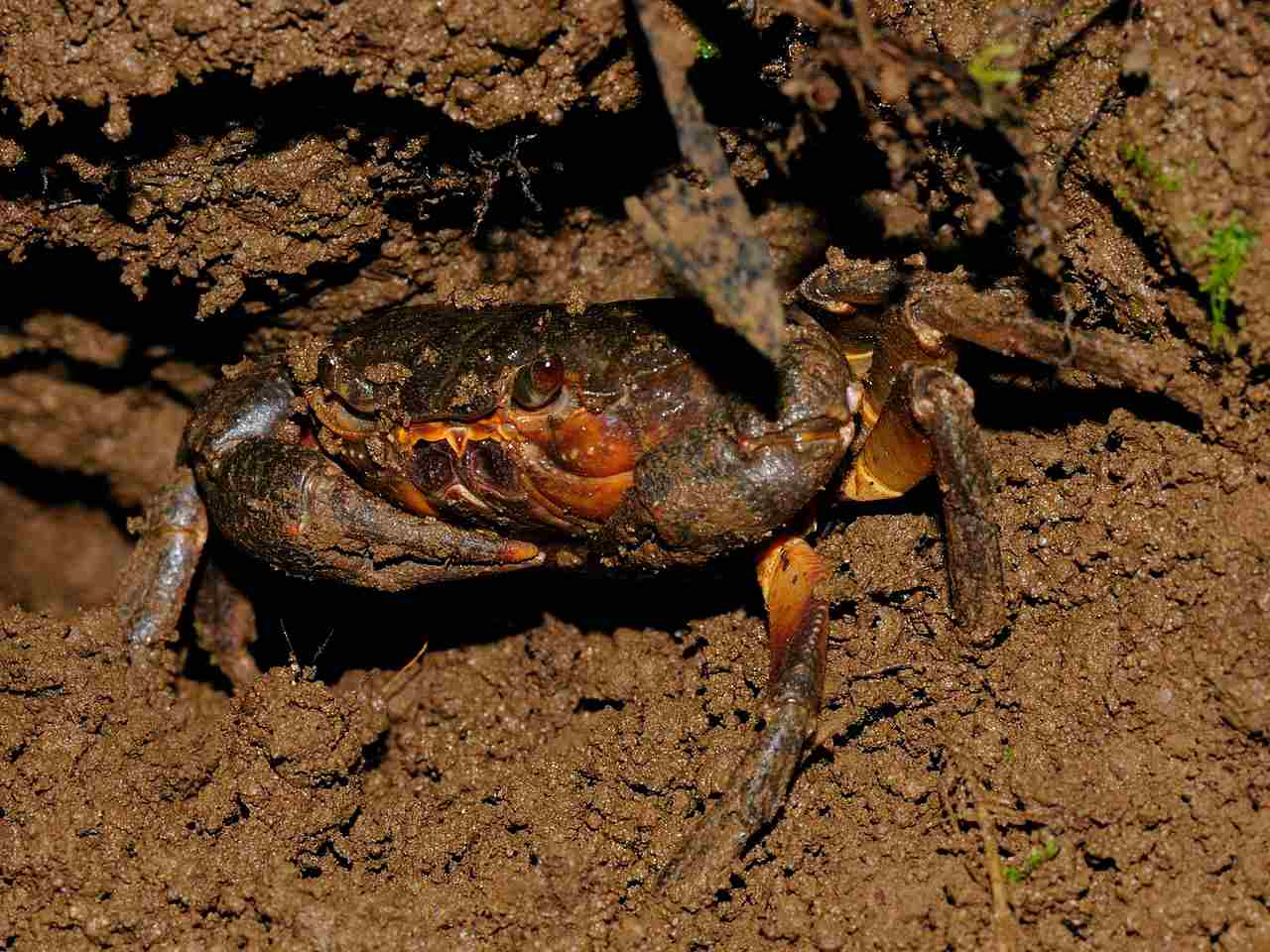
13. Are Crabs Decomposers or Detritivores?
Crabs are detritivores that may be described as decomposers because they indirectly facilitate biodegradation. As detritivores, crabs feed on decaying plant and animal matter, breaking it down into smaller particles. This process aids in the decomposition of organic material and the release of nutrients back into the ecosystem.
Crabs play a vital role in nutrient cycling by consuming detritus and facilitating its breakdown. They have specialized mouthparts and strong claws that allow them to break down organic material, aiding in the decomposition process. By consuming detritus, crabs help to accelerate the breakdown of organic matter, making it more accessible to bacteria and other microorganisms involved in decomposition.
While crabs primarily rely on detritus for their nutrition, they may also scavenge on dead animals, further contributing to the decomposition process. Their scavenging behavior helps to clean up the environment and prevent the accumulation of dead organisms.
14. Are Crabs and Lobsters Decomposers?
Crabs and lobsters are both detritivores, meaning they feed on decaying organic matter. In some contexts, they may be considered decomposers due to their role in facilitating the breakdown of organic material.
As detritivores, crabs and lobsters play a crucial role in the decomposition process. They feed on decaying plant and animal matter, breaking it down into smaller particles. This aids in the biodegradation of organic material and the release of nutrients back into the ecosystem.
With their specialized mouthparts and strong claws, crabs and lobsters are well-equipped to break down organic material. By consuming detritus, they help to accelerate the breakdown of organic matter, making it more accessible to bacteria and other microorganisms involved in decomposition.
While crabs and lobsters primarily rely on detritus for their nutrition, they may also scavenge on dead animals, further contributing to the decomposition process. Their scavenging behavior not only helps to clean up the environment but also prevents the accumulation of dead organisms.
15. Is a Crab a Producer?
No, a crab is not a producer. Producers are organisms that have the ability to manufacture their own food through photosynthesis or chemosynthesis. They are typically plants or certain types of bacteria that can convert sunlight or chemicals into energy-rich molecules.
Crabs, on the other hand, are not capable of producing their own food. They are classified as consumers, specifically as omnivores. This means that they obtain their energy by consuming other organisms, both plant and animal matter.
Crabs have a varied diet, feeding on a range of food sources such as algae, small fish, mollusks, and even detritus. They use their specialized mouthparts and strong claws to capture and consume their prey. While they may occasionally scavenge on dead animals, their primary source of nutrition comes from consuming other living organisms.
In the food chain, crabs occupy a position as secondary consumers. They feed on primary consumers, such as small fish or mollusks, which in turn feed on producers. This makes crabs an important link in the transfer of energy and nutrients within the ecosystem.
16. Are Crabs Carnivores?
Crabs are not strictly carnivores, although they may consume a significant proportion of carnivorous food sources such as annelids, mollusks, insects, and other crustaceans. However, they are best classified as omnivores due to their varied diet.
Crabs have a diverse range of food sources, including both plant and animal matter. They are opportunistic feeders, taking advantage of whatever food is available to them. This adaptability allows them to survive in various habitats and ecosystems.
In terms of their feeding habits, crabs use their specialized mouthparts and strong claws to capture and consume their prey. They have a preference for small fish, mollusks, and algae, but they are not limited to these food sources. Crabs are known to scavenge on dead animals and even consume detritus, which is decaying organic matter.
By being omnivorous, crabs play an important role in the ecosystem as they help maintain the balance of various populations. They contribute to the transfer of energy and nutrients within the food chain, acting as both consumers and decomposers.
17. Is a Crab an Omnivore?
Yes, a crab is an omnivore. They have a diverse diet and are opportunistic feeders, consuming both plant and animal matter. Crabs use their specialized mouthparts and strong claws to capture and consume their prey. They have a preference for small fish, mollusks, and algae, but they are not limited to these food sources.
Crabs are known to scavenge on dead animals and even consume detritus, which is decaying organic matter. This adaptability allows them to survive in various habitats and ecosystems. By being omnivorous, crabs play an important role in the ecosystem as they help maintain the balance of various populations. They contribute to the transfer of energy and nutrients within the food chain, acting as both consumers and decomposers.
Conclusion
* In this article, we have explored various aspects of crabs and their role in the ecosystem.
* We have discussed whether crabs are decomposers, first-order consumers, and producers.
* We have also examined their position in the food chain, their diet as omnivores, and their ability to scavenge and consume detritus.
* Additionally, we have considered their role as secondary and tertiary consumers, as well as their classification as carnivores or herbivores.
* Finally, we have touched upon their potential role as scavengers and decomposers, and their relationship with lobsters.



